Reviews
Dèmoni
Lamberto Bava
Italy, 1985
Credits
Review by David Carter
Posted on 27 October 2010
Source Anchor Bay DVD
Categories 31 Days of Horror VII
Italian horror cinema has been accused of a variety of offenses over the years. It is has been labeled as pessimistic, overly violent, and too difficult to comprehend. These criticisms are not without merit depending on the films considered, however. But it is my assertion that those containing aspects of all three supposed flaws are actually a separate subgenre of Italian horror, Italian Nightmare Horror. The films within this subgenre present viewers with bleak world views and jarringly horrific imagery, and eschew cinematic logic for an approach that is more ethereal and oneiric. Over the coming weeks, we’ll be looking at four examples of Italian Nightmare Horror: Lucio Fulci’s Zombi 2 and The Beyond, Dario Argento’s Inferno, and Lamberto Bava’s Demons.
If we look at Italian giallo and horror cinema as separate entities from their respective genres, as some do, then Demons is somewhat of a landmark film, an endeavor that has no analogue in the other corners of cinema. Furthermore, if we assume that Italian Nightmare Horror is a subgenre of the larger whole, the importance of this film is magnified greater still. Director Lamberto Bava’s cinematic education came at the hands of legends. Bava had been an assistant director on most of Italian horror’s biggest films, including dozens made by his father Mario Bava, Argento’s Inferno and Tenebre, and Ruggero Deodato’s infamous Cannibal Holocaust. The younger Bava’s pedigree in Italian Nightmare Horror is not in question, but Demons was also a near total collaboration of the genre’s mainstays, as Fulci’s longtime writing partner Dardano Sacchetti (Zombi 2 and the “Gates of Hell” trilogy) penned the screenplay along with Bava and Argento. Often dismissed for its nebulous plot and heavy metal soundtrack, Demons represents a synthesis of the key elements Italian Nightmare Horror into single film and is perhaps the best the subgenre has to offer.
As she rides the Berlin subway, attractive music student Cheryl becomes very conscious of how different she is from the other passengers. Flanked by colorful punk rockers, she is overcome with fear; not fear of her companions, but an anxiety caused by how distant she feels from them. Her fear is made manifest once she arrives at the station and is followed by a man wearing a silver mask over half of his face. Her attempt to run is for naught when the masked man catches up and offers not an attack but a free ticket to the Metropol theatre; his imposing appearance simply a promotional device.
Cheryl and her friend Cathy arrive at the cathedral-esque Metropol at dusk, ironically hoping that the feature is not a horror film. They admire the posters and decorations in the lobby while the other patrons - a hodgepodge of characters including a blind man and a pimp and his prostitutes - muse that they have no memory of there being a theatre on this street prior to today, dropping the point as they, too, become distracted by the Metropol’s impressive interiors. The centerpiece of the decorations is strange amalgam of influences: a suit of samurai armor riding a modern motorcycle with a silver demon mask hanging from its handle. Rosemary, one of the prostitutes, tries on the mask for a laugh but cuts herself, leaving a blood smear on the inside.
Demons then shifts its focus to the film the patrons are watching. The title-less film begins with the ominous narration, “The sleep of reason gives rise to monsters,” and concerns a quartet of young people finding the tomb of Nostradamus and, inside, a lost book of prophecy and the demon mask from the Metropol lobby. As the on-screen character places the mask on his face, cutting himself as Rosemary did, the film Demons and the film-within-a-film begin to synchronize. As his wound bleeds, hers begins to bleed anew. Rosemary is unable to stop the bleeding and watches in horror as the wound begins to throb and burst, mirroring the on-screen carnage as the film’s characters are brutally murdered. Like her cinematic double, Rosemary has become a demon.
Demons features some of the best-realized - and therefore, the most horrific - scenes of bodily transformation in horror cinema. Easily rivaling the works of Cronenberg or Tsukamoto, the transformation from human to demon is cringe- and possibly vomit-inducing, as fingernails split, tongues extend, and teeth fall out one by one to be replaced with fangs. This graphic display satisfies the horror aspirations of the film but also serves the narrative goal of identifying the demons as non-human, supernatural beings. The demonic transformations are ultimately tame compared to the havoc they cause, ripping their victims apart and taking a sadistic glee in their deaths.
Once Rosemary begins killing and transforming other patrons in demons, the film evolves into a survival horror film. It is important to note that I believe it evolves, rather than devolves into this style, because Demons infuses this portion of the film with its main philosophical statements. The masterfully realized and cerebral first half introduces the poignant questions that the visceral and fast-paced conclusion answers. The terrified patrons scramble to the exits only to find they lead to concrete walls previously not there. The first question on their minds is “why”? Is this happening to them by design or simply by chance? Were they fated to die in this place in this way?
The manic second half of Demons answers this question with a resounding yes, perfectly illustrating Italian Nightmare Horror’s central tenet of death being an inescapable force and one’s inability to escape from their predetermined fate. This is most evident once the characters become convinced that their fates are linked to the film and set out to stop the film from ending, thus hopefully precluding their own demise. They rush to the projectionist booth only to find it locked. Cheryl’s suggestion that she climb in through the projection window is dismissed in favor of brute force. The door is broken down and the group finds themselves in an empty room surrounded by colored windows, the room itself containing a locked door. Once through the second door they find that there is in fact no projectionist; the film is controlled by an automated system, starting and stopping on a predetermined schedule. Unable to reason with a peer as they had hoped, they instead smash the machinery, effectively stopping the film. This, however, does not end their terror as they had hoped but does rob them of any ability to understand their situation and without insight into its conclusion.
The metaphor for religion here is very evident visually, with the projection room’s colored windows resembling the stained glass typical of Christian churches. The central question of Demons is answered by what they find: an empty booth. The worldview of Italian Nightmare Horror is ultimately atheistic, despite the religious overtones that Demons and the films of Argento and Fulci contain at times. Bava’s film is saying there is no God, no projectionist; simply a machine that runs the universe on a preprogrammed schedule and a predetermined end point. The observable machinations of the automated projector mirror the invisible machinations of fate, controlling the lives of individuals in the same manner the projector controls those of the characters.
The patrons of the Metropol are unable to fully grasp this, however, and mistake the brief respite from terror they get after smashing the projector as proof that their act of deicide-in-effigy has saved them. The blind patron, mauled by a demon but still living, corrects them, saying, “It’s not the movie, it’s this theatre” and another demon attack proves him correct. This, too, is a metaphorical reaffirmation of the Italian Nightmare Horror worldview. Death does not exist due to the absence of God, but rather because it simply the natural order of the universe. Demons is atheistic but not anti-religion as shown through the idea that the film (religion) is the patrons’ only vehicle through which to understand their plight in the theatre (the world). Stopping the film does not stop the terror but also, tellingly, it does not make it any worse. Religion is ultimately a moot point since it neither benefits nor harms, however, it is shown as distracting those involved from accepting that their world is cruel, unfair, and often violent.
In that Demons depicts a godless world driven by a fatalistic march toward death, it is curious that it ends with what could be considered an act of divine intervention. A helicopter crashes through the roof of the Metropol at an incredibly opportune moment, allowing Cheryl and her male counterpart, George, a chance to escape. They make it to the roof only to come face-to-face with the film’s embodiment of fate: the silver-masked man. It is he, as fate, who is responsible for everyone’s presence at the Metropol and his reappearance on the rooftop at the film’s climax gives a purpose to his earlier actions. He attempts to block Cheryl and George’s escape, implying that while not an active participant in the terror inside the theater, he is the architect of it. His efforts to force them back into the theatre below rather than outright killing them can be interpreted as his desire to have them not simply die, but to fulfill the paths laid out for them. Cheryl and George escape, but their victory is short-lived as the entire world has been overrun with demons.
Demons ends in the same manner as the other Italian Nightmare Horror films we’ve looked at, with a worldwide apocalypse. Adding to the nihilism, Cheryl transforms into a demon only to be shot and left for dead in the middle of the road as George speeds off to safety. Demons - and all of Italian Nightmare Horror - exists in a world without happy endings or, more correctly, a world without endings. Demons is a bleak film but one that is still intelligent and starkly beautiful at times. It is the most accessible of the Italian Nightmare Horror films in that it is less confusing and offers the audience the occasional moments of reprieve from terror that its compatriots seldom do. It would also be one of the last films to fully conform to the style of Italian Nightmare Horror as filmmakers began to adopt a more straightforward narrative style. The brief run of Italian Nightmare Horror left an indelible mark on the horror genre, however; one that, it can be argued, has not been surpassed in terms of artistic quality and sheer terror since.
More 31 Days of Horror VII
-

The Thin Blue Line
1988 -

The Ninth Configuration
1980 -

Scream
1996 -
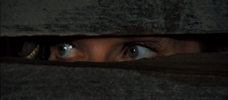
Dying Room Only
1973 -

Brain Dead
1990 -

Zombi 2
1979 -
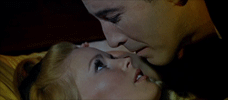
Dracula Has Risen from the Grave
1968 -

The Storyteller
1988-1989 -
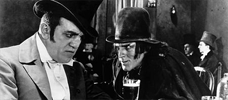
Dr. Jekyll and Mr. Hyde
1920 -

I Know What You Did Last Summer
1997 -
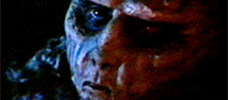
Don’t Be Afraid of the Dark
1973 -

Dark Age
1987 -
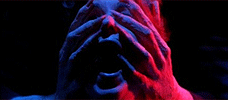
Inferno
1980 -
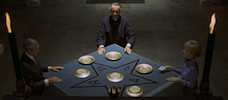
To the Devil a Daughter
UK / West Germany -

Trapped
1973 -
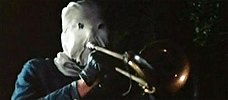
The Town that Dreaded Sundown
1976 -

Halloween H20: Twenty Years Later
1998 -

Killdozer
1973 -
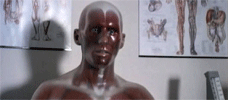
Pin
1989 -
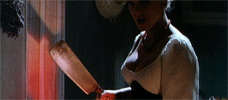
Frankenstein Created Woman
1967 -
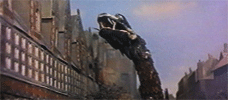
Reptilicus
1961 -
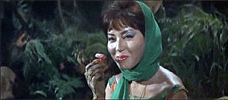
Matango
1963 -

I Still Know What You Did Last Summer
1998 -
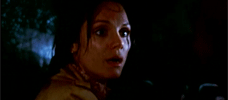
Night Terror
1977 -
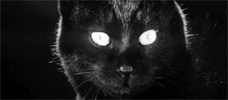
Kuroneko
1968 -

Demons
1985 -
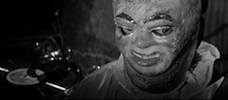
Paranoiac
1963 -
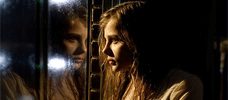
Let Me In
2010 -
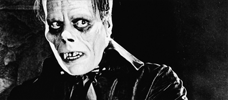
The Phantom of the Opera
1925
We don’t do comments anymore, but you may contact us here or find us on Twitter or Facebook.



